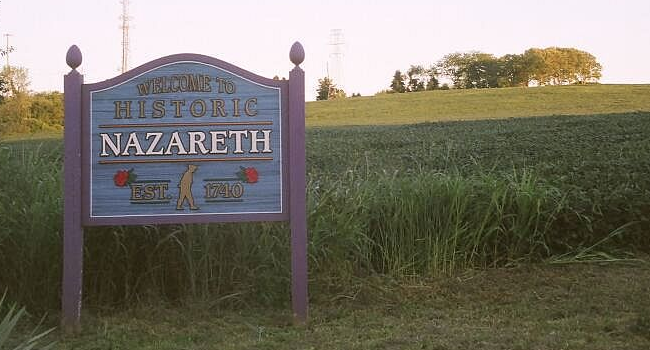
August Serensits Jr. was an employee at the Lawrence/Dragon Cement Company in the first ward of Northampton. In 1943, he was drafted to serve in the United States Army and was assigned to the U.S. Army Armored 83rd Reconnaissance Battalion and trained to be a member of a tank crew. August Jr. did not have an automobile, so this was a new chapter in his life.
The most common tank used in World War II was the Sherman tank. American industry rose to the challenge and soon 50,000 Sherman tanks rolled off the production lines. The tank crew of five worked in close quarters; they became a family. The crew consisted of a commander, loader, gunner, driver and assistant driver. The speed of the tank was 26 mph. It was armed with a 75mm gun and two machine guns.
Mr. Serensits’ unit was sent to England as the Allies prepared for the D-Day invasion of Europe. D-Day occurred on June 6, 1944. It was one of the largest invasions in history.
His tank unit arrived a few days after the invasion. The Allies now had the difficult task of clearing the Germans from France and Europe.
The Allies had to adjust to fighting in the French countryside. They moved through farmlands in Normandy. Farms were small, irregular in size and were surrounded with thick hedge rows. For centuries, the hedges grew so thick you could not see through them. They were surrounded by mounds of ground and ditches. Behind these natural barriers were German soldiers and artillery.
A key battle was fought at the town of Saint-Lô. Private Serensits’ Battalion fought at this crucial battle. Sharp tusks were welded on the front of tanks to penetrate the hedgerows. Fifteen hundred planes dropped thousands of tons of bombs to weaken the enemy.
August Jr.’s tank was hit, either by a landmine or shell from German artillery, and within seconds the tank was destroyed. Private August Serensits Jr. was the only survivor. Badly injured, he crawled out of the tank, barely able to walk. He was fortunate to find refuge in a barn. In later years, he said while he was in the barn he heard German soldiers speaking outside; thankfully they did not search the barn.
A day later, August Jr. heard bombers overhead. Feeling he was safe, he left the barn and reached American units. He was sent to a military hospital to recuperate from his wounds. After recuperating from his injuries, August Jr. was back in a Sherman tank. The unit fought in Belgium and eventually reached Germany. The Siegfried Line was finally broken, and the Allies moved through Germany.
In May 1945, the Germans surrendered and the war in Europe was finally over.
After the horrific experience of World War II, August Jr. returned home in November 1945. He received the Purple Heart, three Bronze Stars and an Eastern Campaign Medal for his courage and heroism. He was welcomed home with great joy and happiness by his parents, family and neighbors.
At home for just a few days, August Jr. was back on the job with his father at the Dragon Cement Company. The Serensits’ legacy at the Dragon would continue when August Jr.’s son, Jerome, was hired to work at the plant.
In 1983, the employees of the Dragon received a notice from Martin Marietta, the last corporate owner, that the plant would cease operations. With sadness and pride, the Serensits left the plant on the last day and the Dragon would become a page in local cement history.








